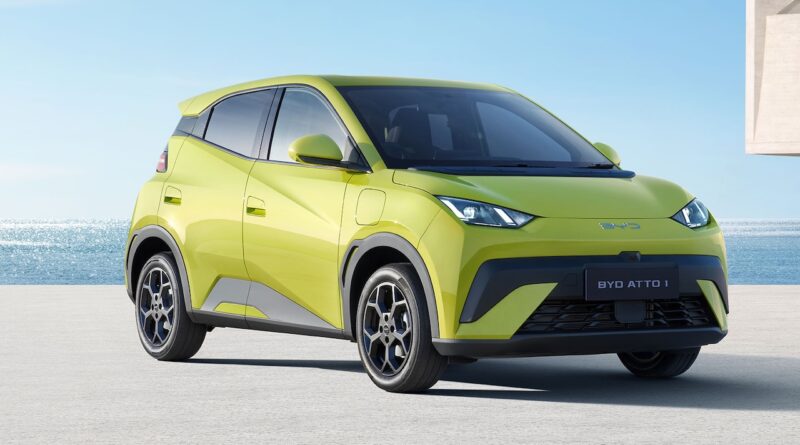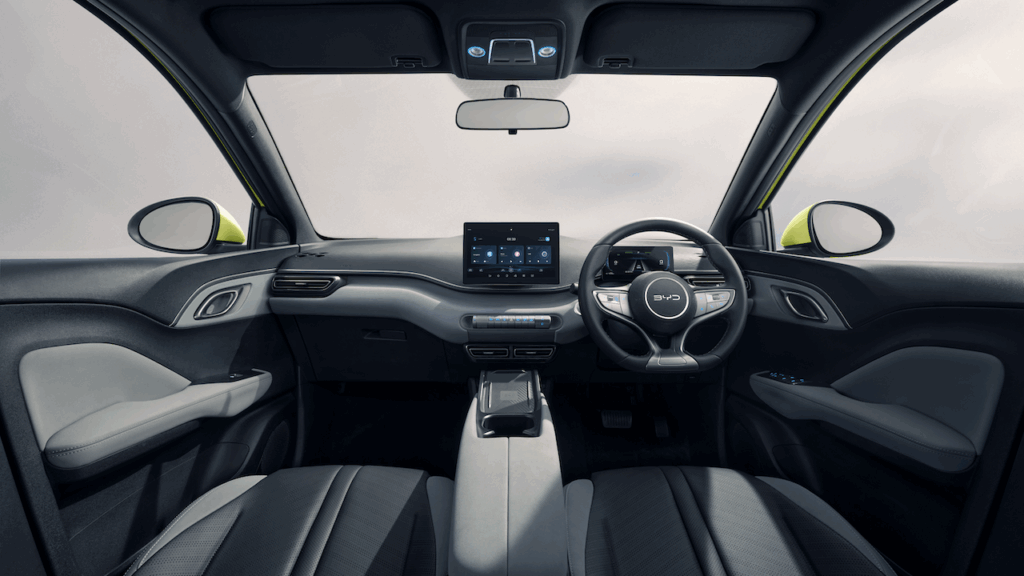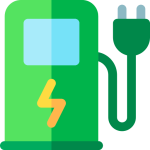
BYD’s smallest electric city car, the Seagull, has re-emerged as a realistic candidate for the Australian market after changes in the brand’s distribution model. If BYD Australia elects to import the Seagull – whether under that name or a market-specific badge – it has the potential to reset the EV entry point in Australia well below the current low-cost benchmark.
Why the Seagull is back on the table
Until recently, BYD’s local distributor, EVDirect, considered the Seagull uneconomic for Australia and ruled it out. The transition of distribution to factory-owned BYD Australia has reopened the assessment. Industry sources and dealers told EV Central that the Seagull is being actively studied for an Australian launch; some insiders suggest it is “very likely” to arrive, with pricing tipped to begin under $25,000.
The fundamentals that make the Seagull compelling are straightforward: compact dimensions, a modest battery pack and a simplified equipment list combine to lower manufacturing and logistics costs. Compared with BYD’s current Australian entry-level model, the Dolphin, the Seagull is smaller and therefore likely to sit beneath it on price.
What the UK market tells us
The Seagull is already on sale in right-hand-drive UK markets (sold there as the Dolphin Surf in some trims), offering a useful reference for what Australia could expect. The entry variant in the UK is fitted with a 30 kWh battery delivering about 220 km of WLTP-rated range – a practical figure for urban commuters and short daily trips. Standard equipment for this level typically includes vegan-leather seats, a 10.1-inch rotating infotainment screen with navigation, and Apple CarPlay and Android Auto integration.
Higher-spec variants in other markets upgrade to a 43.2 kWh battery and roughly 320 km of range, and the top model pairs the larger pack with a more powerful electric motor (up from around 65 kW to approximately 115 kW). If BYD offers multiple grades locally, Australia buyers could see a clear trade-off between price, range and performance.
Size and packaging
The Seagull measures about 3,990 mm long, 1,870 mm wide and 1,590 mm tall, riding on a 2,500 mm wheelbase. It is configured as a four-seater (no central rear seat) and claims a 308-litre boot – solid numbers for urban usability. In context, it is roughly 300 mm shorter than BYD’s Dolphin and noticeably smaller than many of the small crossover and compact EVs now on sale, making it a genuine city-car contender.

BYD’s public comments and likely naming
BYD Australia has been typically cautious in public statements: noting the Seagull has exceeded one million global sales in a short period while confirming there is local and international interest, but stopping short of any commitment. The company has repeated its usual line: if there is customer appetite and the commercial proposition makes sense for buyers, it will consider bringing models to market.
One practical detail worth noting is that BYD frequently rebadges or renames models for specific markets. The Seagull appears in export markets under several names – Dolphin Surf, Dolphin Mini and Atto 1 in certain territories. Given the strong recognition of the Atto name in Australia (the Atto 3 was BYD’s first locally sold model and the Atto 2 is slated to arrive), a local launch might use a name that aligns with existing branding.
Implications for Australian EV pricing and the market
A sub-$25,000 electric car would be a watershed for Australia. Lowering the entry price would:
- Accelerate new EV adoption among budget-conscious buyers and small households.
- Put competitive pressure on local prices for existing entry EVs such as the Dolphin Essential, and on ICE equivalents in the A-segment and small B-segment.
- Force rival brands to sharpen their value propositions – in price, equipment, warranty and aftersales.
However, a headline price alone won’t determine success. Buyers will weigh total cost of ownership, perceived safety, battery warranty and real-world range, as well as dealer service and resale values. The arrival of an ultra-affordable city EV could therefore reshape buying behaviour in inner-city and outer-urban areas, but it may have less immediate impact on buyers seeking longer-range or family-sized EVs.
Challenges and considerations for a local launch
There are several operational and regulatory hurdles BYD would need to clear before the Seagull could arrive and be successful in Australia:
- Right-hand-drive homologation and local compliance: Although BYD sells RHD Seagull-derived models in the UK, Australia has its own Australian Design Rules (ADRs) and safety testing requirements that must be met.
- Crash-test and safety perception: Buyers – and fleet purchasers in particular – will scrutinise crash-test results, active safety systems and structural integrity. Meeting or exceeding local expectations is crucial.
- After-sales and warranty support: A competitive warranty, reliable servicing network and parts availability are essential to build trust among first-time EV buyers.
- Charging and range expectations: A 30 kWh battery with ~220 km real-world range is fine for urban use, but Australian buyers accustomed to longer highway drives may push buyers toward larger battery options. Pricing and package strategy will therefore be key.
- Production and supply chain: Global demand, shipping logistics and allocation priorities could influence timing and initial availability, particularly if BYD needs to balance supply across many markets.
- Brand positioning: BYD will need to position the Seagull as a credible, safe, everyday city car rather than a “cheap” product – messaging that underlines value, sustainability and total cost benefits will be important.
Where the Seagull might fit in BYD’s local lineup
BYD has signalled a significant rollout in Australia: the Atto 2 confirmed for local sale later this year, the Sealion 8 PHEV set to arrive by April 2026, and additional models planned through early 2026. The Seagull would logically fill the lower end of that portfolio – a compact, city-focused vehicle designed to broaden BYD’s market penetration and appeal to urban drivers and first-time EV buyers.
Timeline and next steps
Industry reporting suggests BYD has allowed Australian journalists to sample the Seagull during a media trip to China, and dealer sources are aware the model is under study. Still, no firm release date or pricing has been confirmed. If BYD fast-tracks local approval – and chooses to prioritise Australia within its export schedules – the Seagull could appear in showrooms within 12-24 months, though supply and homologation realities could extend that timeline.
Conclusion
The Seagull presents a credible pathway to a genuinely affordable electric car in Australia. Its compact footprint, modest battery and basic-but-modern equipment make it an attractive proposition for urban drivers and budget-minded buyers. But the headline price is only part of the equation: to be a lasting success in Australia, the Seagull will need to clear regulatory and safety hurdles, arrive with a strong dealer and warranty proposition, and meet the real-world needs of Australian motorists. If BYD brings this model to Australia at a sub-$25,000 price point, it will be an important milestone – not just for the brand, but for the broader move toward accessible electrification.
FAQs
Q: Has BYD confirmed the Seagull for Australia?
A: Not officially. BYD Australia has acknowledged international interest and strong global sales but has not confirmed a local launch. The model is under active review.
Q: What price could the Seagull be in Australia?
A: Industry sources suggest the Seagull could be priced under $25,000 if introduced in Australia. Final pricing will depend on specification, taxes, local homologation costs and BYD’s pricing strategy.
Q: What range and battery sizes does the Seagull offer?
A: In right-hand-drive markets, the entry model uses a 30 kWh battery delivering about 220 km of WLTP-rated range. Higher trims in other markets use a 43.2 kWh battery with roughly 320 km of range.
Q: Will the Seagull be renamed for Australia?
A: Possibly. BYD uses different names in different markets (Dolphin Surf, Dolphin Mini, Atto 1, etc.), and the Atto nameplate is already established in Australia. A local name that aligns with BYD’s Australian lineup is likely.
Q: What are the main barriers to a local launch?
A: Key challenges include meeting Australian Design Rules and safety standards, securing crash-test and compliance approvals, ensuring right-hand-drive adaptations where required, establishing local after-sales support, and managing supply chain and allocation.
Q: Who is the Seagull aimed at?
A: The Seagull targets urban drivers, first-time EV buyers and cost-conscious customers who prioritise low purchase price, ease of parking and short-commute efficiency over long-range performance.
About EV Evolution
EV Evolution is the leading online platform dedicated to Australian electric vehicle owners and enthusiasts. We foster a vibrant community, delivering essential EV news and insights, and enhancing user engagement through our innovative, AI-powered chatbot for dynamic discussions. Our mission is to empower Australian electric vehicle owners and enthusiasts by fostering a vibrant, AI-driven online community that connects, informs, and advances the nation’s electric vehicle landscape.




